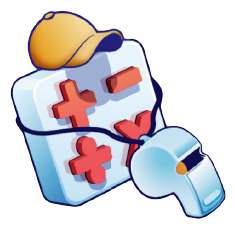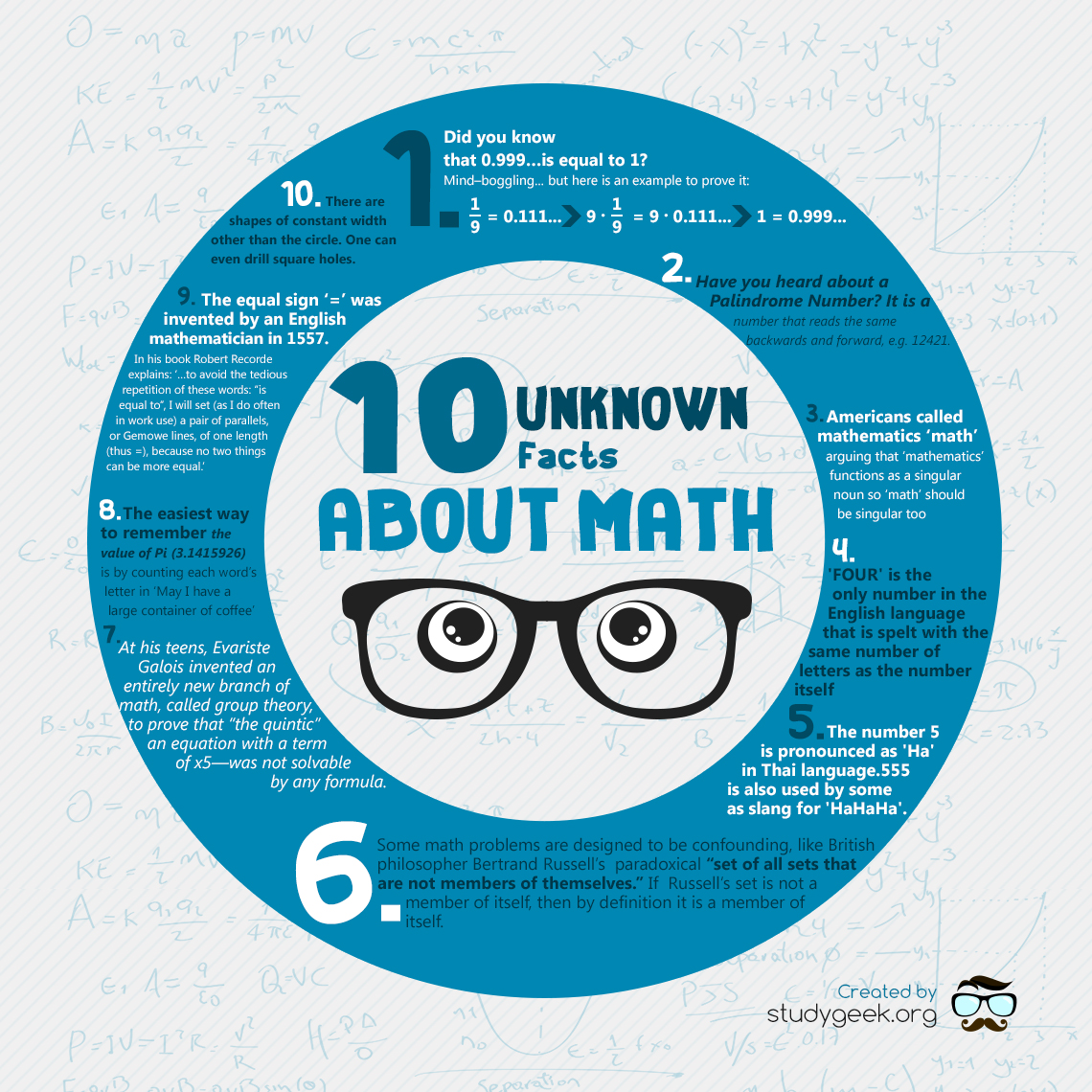
Private and Parochial School Newsletter |
|||
10 Unknown Facts About MathOriginally pinned from: visual.ly/10-unknown-facts-about-math
|
|
||
Strategy for Success: Write an easier problem and use models.Even when students can understand the words in a problem, they may find it helpful to act it out with manipulatives, real-life objects (or realia), and drawings. For example: An artist makes jewelry using beads of various colors and prices. He pays $1 each for blue beads, $2 for green, $3 for red, and $4 for all others. He designs a necklace with six blue beads, four green, and 10 red. How much does he spend on beads to make the necklace? You can give the students colored counters to model the necklace. Here is one possible design:  Make a table on the board as shown, so that the information from the problem is simplified from words into color-coded symbols:
Have students work in small groups to find the cost of the necklace and explain their process. Students will learn from each other as they work together. Auditory learners in particular will profit from the discussion as they work on the task. Visual learners benefit from “seeing,” as well as “hearing” and “doing.” If there are English language learners, have someone who speaks their language, such as a bilingual aide, work with that group. Use creative grouping among students and collaboration among teachers! Planning lessons with your school’s experts on students with special needs will give you more insights on how to reach all students in the same class. Read the full article |
Product Spotlight
The Personal Math Trainer® Powered by Knewton™ bridges formal and informal learning time, redefining digital and classroom instruction as we know it. With the ability to customize and present dynamic lessons, HMH Player™ gives teachers back valuable time. By seamlessly merging technology with curriculum, teachers are equipped with the resources needed for effective and efficient instruction. Designed for today’s digital natives, HMH Player connects students to their interactive lessons, adaptive assessments, and a variety of digital tools to maximize the amount of time students are on task both in and out of school. The app’s innovative design provides ease of use and flexibility for the teacher and student with both online and offline access to the trusted content and core curriculum programs of HMH®. Find out more about The Personal Math Trainer. |
Professional Development Corner—The Leadership and Learning CenterImplementing the CCSS Mathematical Practices Using Singapore Math Strategies and Problem Solving Structures Douglas Reeves, Rachel Syrja, and featured guest, Yeap Ban Har, discuss how to provide a firm foundation for mathematics instruction using world-class Singapore Math strategies as well as problem-solving structures from Five Easy Steps to a Balanced Math Classroom. The balanced math program components: Step 1: Computational skills In case you missed the webinar on Implementing the CCSS Mathematical Practices Using Singapore Math® Strategies and Problem Solving Structures, you can now watch it online.
|
Private and Parochial School of the MonthSt. Anastasia School —Fort Pierce, Florida
The process of integrating technology into the classroom is impacting so many schools in our country right now. Here on our campus, we decided to just “dive right in” last year. Several of the faculty and administration visited many schools and attended workshops that would point us in the right direction. Our middle school, Grades 6-8, are in their second year of one-to-one iPad® technology. Our lower grades currently have a check-out cart of iPads that are available to them. We basically used our first year as a living and learning model, and now we are able to see the fruits of that time well spent. This year our teachers are all much more confident to lead our students. Each of the five subject area teachers is incorporating technology in new and exciting ways in their classrooms as well as establishing routines. Our religion teacher has the Bible downloaded for all of her students to have and share at their fingertips. Our social studies teacher brings the large world closer to each individual student on a daily basis. Our math teacher loves to create math problems using the QR app and have her students discover the fun in problem-solving. The science teacher creates hands-on experiences daily for his students and has his students videotape his classes so they can learn at their own pace at home, and the language arts teachers are busy implementing their new HMH curriculum with the so very many computer driven materials that make literature and writing come alive for their students. The new language arts program materials were not only purchased for our middle school students, but for all of our students! This was quite an undertaking for all of the teachers as well as the students. We are working together to make this a terrific year for our fantastic students, parents, and teachers by keeping in mind that technology is the tool behind our fantastic educators! Is your school a leader? Do you have a great success story you’d like to share? Tell us about it and you could see your school featured in a future edition! |
Financial Resources to Help Your School ExcelThis month’s featured grant: Educational Grants from Dr. Scholl Foundation. In general the Foundation guidelines are broad to give them flexibility in providing grants. Applications for grants are considered in the following areas: Education, Social Service, Healthcare, Civic and Cultural, and Environmental. Average Amount Awarded: |
Monthly PollLast month’s poll results: What is your preferred style of teaching math?
This month's question: Typically, how do you first find out about new books to read in your classroom?
See how you compare next month when we reveal the poll results! |
Our Vision: From the Desk of HMH Leadership“As technology enables us to deliver educational content in new and different ways, smart and visually engaging design is more crucial than ever before in enabling an effective and delightful user experience. By applying design thinking, creativity, and problem-solving skills to create learning content driven by simplicity, connectivity, and transformation, designers enable thoughtful experiences that are intuitive and command attention.” —Morgan Curran is Vice President of the Design Studio at Houghton Mifflin Harcourt, leading a team of user experience, visual, audio visual, animation, gaming and character designers, focused on delivering next generation learning experiences for K–12 students, teachers and parents. - See more here. |

